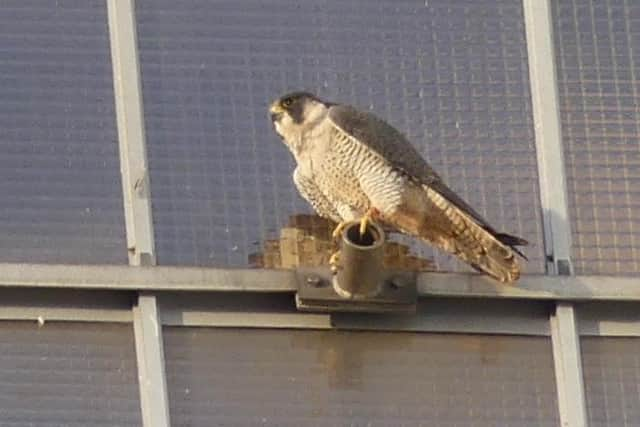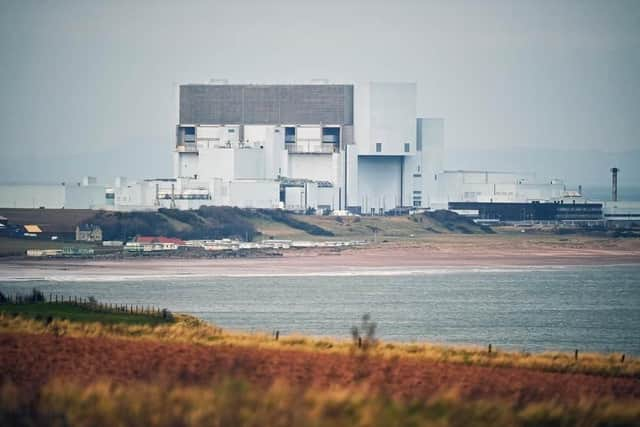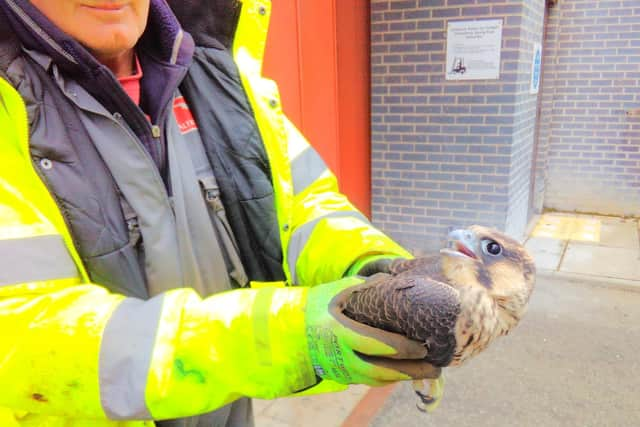Meet the superfast birds of prey raising chicks on the roof of a Scottish nuclear power station
Two peregrine falcon chicks were born this spring on the roof of Scotland’s only operational nuclear power station – Torness, in East Lothian.
The pair are the latest brood to be raised on the rooftop, bringing the total number of fledglings to 55 over the past 25 years. Peregrines are not only the fastest birds, but the swiftest of all creatures in the animal kingdom, reaching speeds of more than 200mph during dives while hunting for food.
Advertisement
Hide AdAdvertisement
Hide AdThey are elite hunters, eating mainly other birds of a wide variety of species – and sizes. They have also been known to steal food, including fish and rodents, from other raptors.
Estimates suggest there are around 1,500 pairs in the UK.
Safe nest site
EDF-owned Torness, on the coast near Dunbar, has hosted a nesting couple for at least a quarter of a century. The power station, the only one of its kind still operating in Scotland, provides a secure breeding environment for the apex predators, away from egg thieves and with a plentiful food supply.


Torness is also this year marking ten years since receiving the Biodiversity Benchmark, awarded by the Wildlife Trusts to certify good management of biodiversity on sites owned by businesses. It is the only site in East Lothian to hold the accolade.
Emma Price Thomas, head of corporate partnerships for the Wildlife Trusts, said: “It’s fantastic news that peregrines at Torness power station have had another successful year. Stories like this show that through careful management wildlife can thrive in unlikely places.
“Retaining the Biodiversity Benchmark at Torness for ten years is testament to EDF’s commitment to improving their sites for wildlife. This certification challenges businesses to take responsibility for nature recovery through effective habitat management, surveying and sustainable use of land.”


She said she was “looking forward to seeing even more success stories in the future”.
Haven for wildlife
But it’s not just peregrine falcons choosing to make their homes at the power station. The site supports a wide range of wildlife, including 39 species of birds, and has become a haven for some rare species.
The location supports the only known breeding pairs of ringed plovers in East Lothian, with the population up to three pairs since 2019. It is also Scotland’s first and only known site supporting the ivy mining bee, along with 120 other invertebrate species.
Advertisement
Hide AdAdvertisement
Hide Ad

Numerous butterflies and moths have been recorded at Torness, including a rare appearance from the distinctive bright yellow brimstone moth, not usually seen that far north, but spotted during the hot weather of 2022.
Clare Galloway, who works in the station’s environmental safety group, said: “We actively manage the land around the power station to make sure it is as welcoming to as diverse a range of flora and fauna as possible. As well as roping off areas of the car park to support breeding birds, we plant specific shrubs and plants to give a variety of species the best chance of flourishing possible.
“It is always a delight to make new discoveries when we carry out our monitoring and it just goes to show that nature and industry can co-exist if a sustainable approach is taken.”
Comments
Want to join the conversation? Please or to comment on this article.